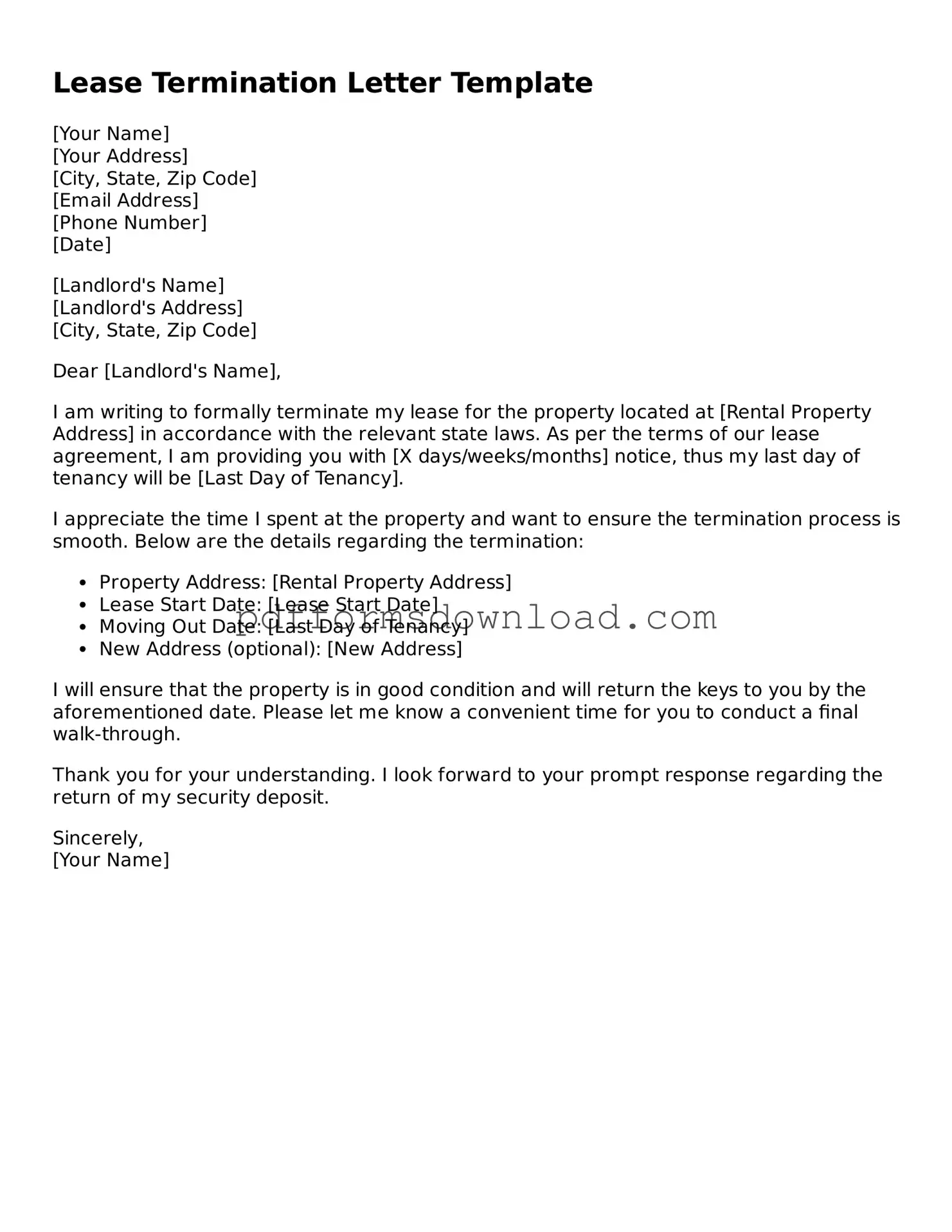What is a Lease Termination Letter?
A Lease Termination Letter is a written notice from a tenant or landlord that formally ends a lease agreement. This document outlines the intention to vacate the property or to terminate the lease, providing clarity for both parties about the timeline and expectations for moving out or concluding the rental arrangement.
When should I send a Lease Termination Letter?
You should send a Lease Termination Letter as soon as you decide to end the lease. Most leases require notice to be given 30 to 60 days before the lease end date. Check your lease agreement for specific requirements. Sending the letter early allows both parties to prepare for the transition smoothly.
How do I format a Lease Termination Letter?
A Lease Termination Letter should be clear and concise. Start with your name and address, followed by the landlord's name and address. Include the date, a subject line, and a clear statement of intent to terminate the lease. Be sure to mention the property address and the intended move-out date. Close with your signature and printed name.
Do I need to provide a reason for terminating the lease?
Generally, you do not need to provide a reason for terminating the lease unless your lease specifically requires it. However, offering a reason can foster goodwill, especially if you have a positive relationship with your landlord. If you are terminating due to issues like repairs or safety concerns, it may be wise to document those as well.
Can I terminate my lease early?
Yes, you can terminate your lease early, but you may face penalties. Review your lease for early termination clauses. Some leases allow for early termination under specific conditions, such as job relocation or health issues. Always communicate with your landlord to discuss your situation and explore potential solutions.
What happens after I send the Lease Termination Letter?
After sending the letter, the landlord should acknowledge receipt. This acknowledgment can be verbal or written. You should also prepare for the move-out process, including cleaning the property and returning keys. Ensure you understand any final inspections or security deposit return procedures as outlined in your lease.
Is a Lease Termination Letter legally binding?
A Lease Termination Letter is a formal notice, but its legal binding nature depends on the terms of your lease agreement and local laws. It is crucial to follow the notice requirements in your lease. If both parties comply with the terms, the letter serves as a legal notification of the intent to terminate the lease.
